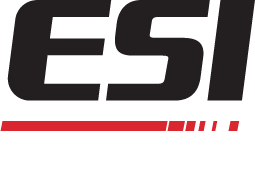EB Uv Curing Explained Part I
EB and UV Curing Explained, Part I
Since the 1960s, electron beam technology has been a safe and efficient way to print and cure. It has not been, however, the only process within the energy curables industry. Ultraviolet (UV) methods have been around for decades as well and a lot of companies want to better understand both options.
When comparing and contrasting, it usually comes down to performance and cost. When it comes to high speed printing and curing applications, large volume orders have to be completed in a timely manner, without breaking the bank. Not sure of the differences between UV and eBeam curing and printing? Here’s a quick overview to give you a better understanding.
UV curing has a nice final print quality, inks that are devoid of volatile organic compounds (VOCs) and there is generally a good tolerance in terms of rubbing and chemical resistance.
There are several downsides to UV curing as well. The placement and use of photoinitiators is a requirement. In order to achieve the high quality, there is an associated higher cost. In order to be food compliant, special ink is needed to ensure safety. Time is spent cleaning as there isn’t an option for autocleaning. The viscosity is also very high and you have to deal with solvents.
